

— Products —
 Consumer hotline +8618073152920
Consumer hotline +8618073152920 WhatsApp:+8615367865107
Address:Room 102, District D, Houhu Industrial Park, Yuelu District, Changsha City, Hunan Province, China
All products
rain gauge is an instrument used to measure the amount of precipitation falling on a location at a specific time. It has a wide range of applications in meteorology, agriculture, hydrology and environmental science. Depending on the measurement principle and design, rain gauges can be divided into several types, including standard rain gauges, tipping bucket rain gauges and weighing rain gauges.
Tel/WhatsApp:+8615367865107
Email:Arvin@niubol.com +Nearly 100 partner companies in more than 68 countries. We are committed to providing high-quality, practical products to meet your needs and help you solve problems. Our products comply with international standards and are certified with ISO, CE and RoHS.Product Details
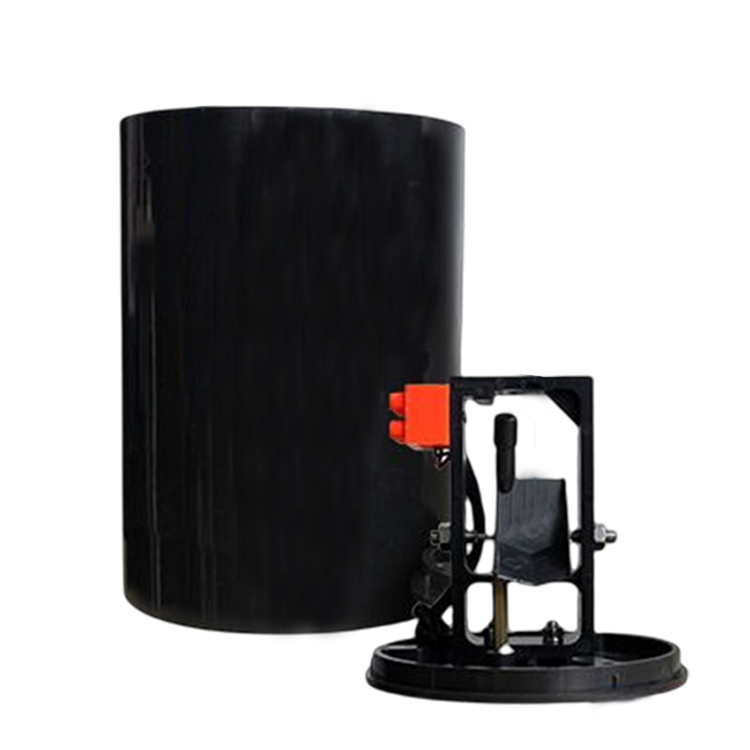
|
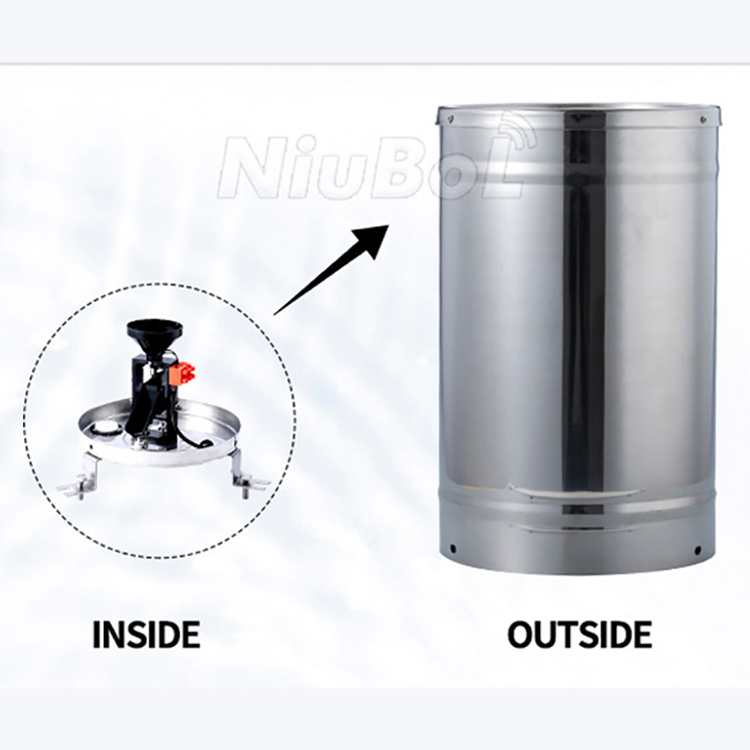
|
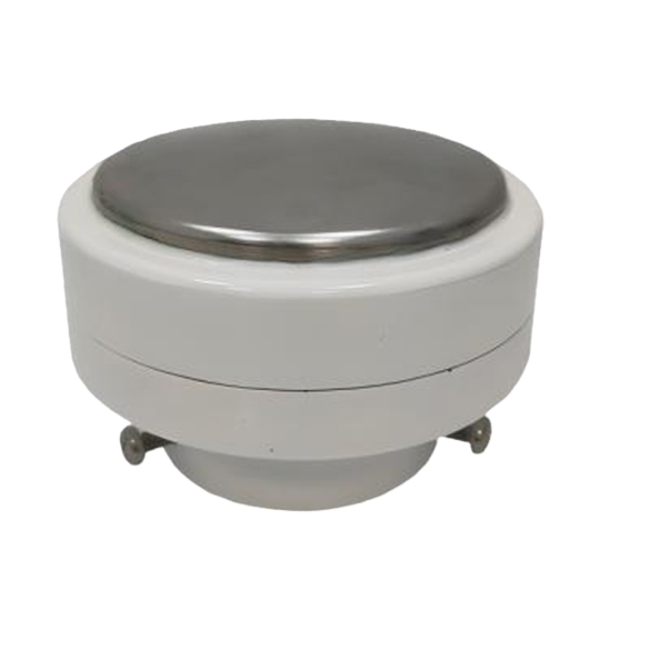
|
| ABS Tipping bucket rain gauge sensor | Tipping bucket Rain gauge sensor | Piezoelectric Rain Gauge |
A rain gauge is an instrument used to measure the amount of precipitation falling on a location at a specific time. It has a wide range of applications in meteorology, agriculture, hydrology and environmental science. Depending on the measurement principle and design, rain gauges can be divided into several types, including standard rain gauges, tipping bucket rain gauges and weighing rain gauges.
1. Standard Rain Gauge: This is the simplest type, which usually consists of a collection funnel and a measuring cylinder underneath, and is used to collect and measure precipitation directly.
2. Tipping bucket rain gauge: The amount of precipitation is measured by means of a tipping bucket mechanism. When a certain amount of rainwater has been collected, the tipping bucket tilts and discharges the water, and the action is recorded so that the amount of precipitation can be calculated.
3. Weighing Rain Gauge: Calculates the amount of precipitation by measuring the weight of the collected rainwater and is suitable for measuring both rain and snow.
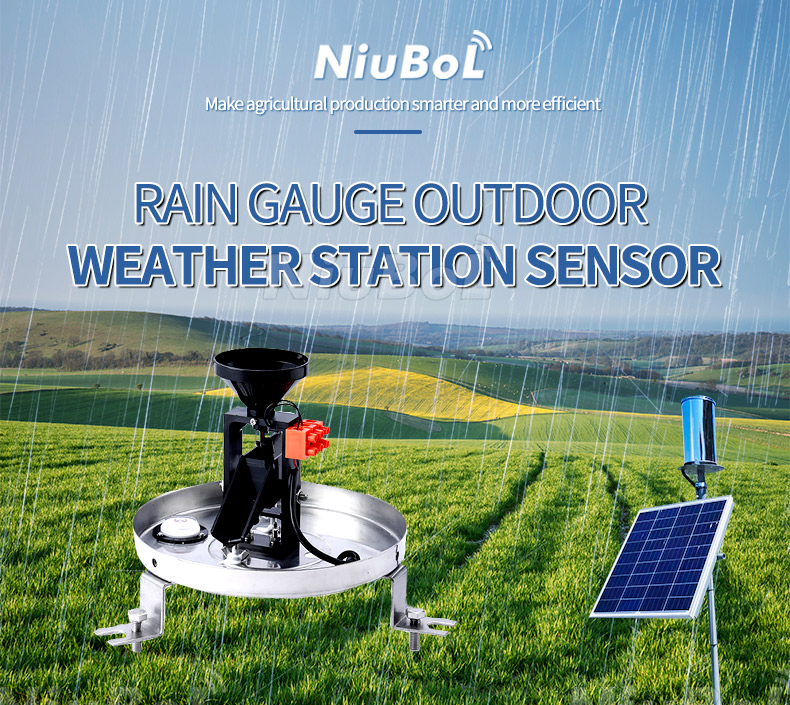
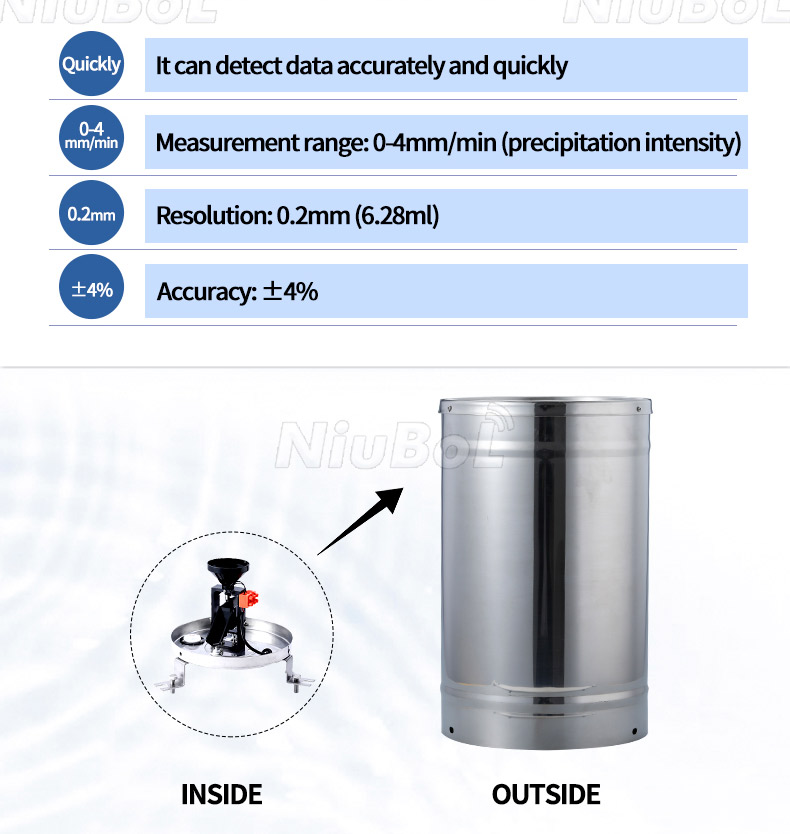
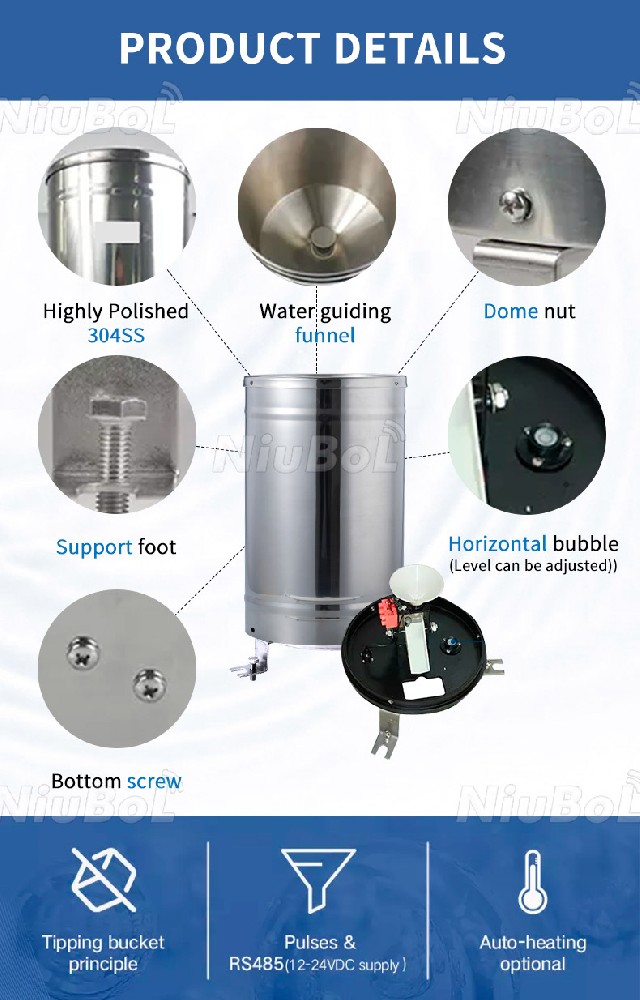
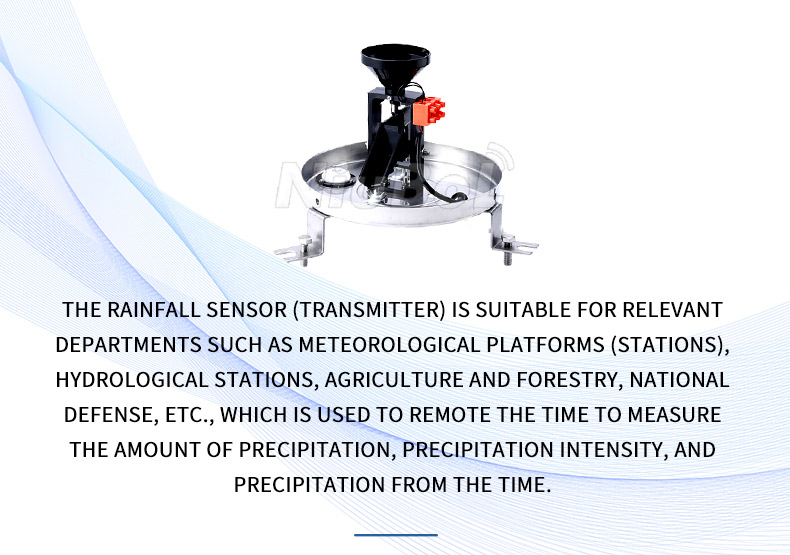
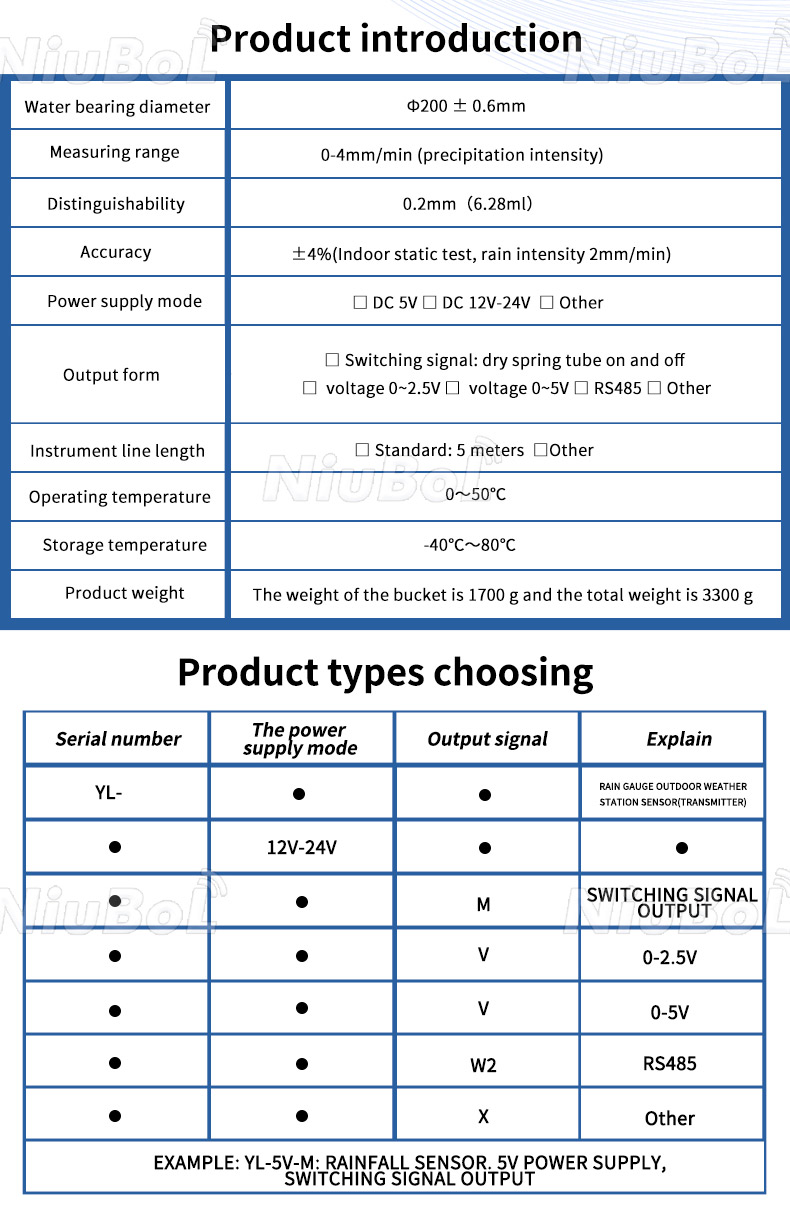
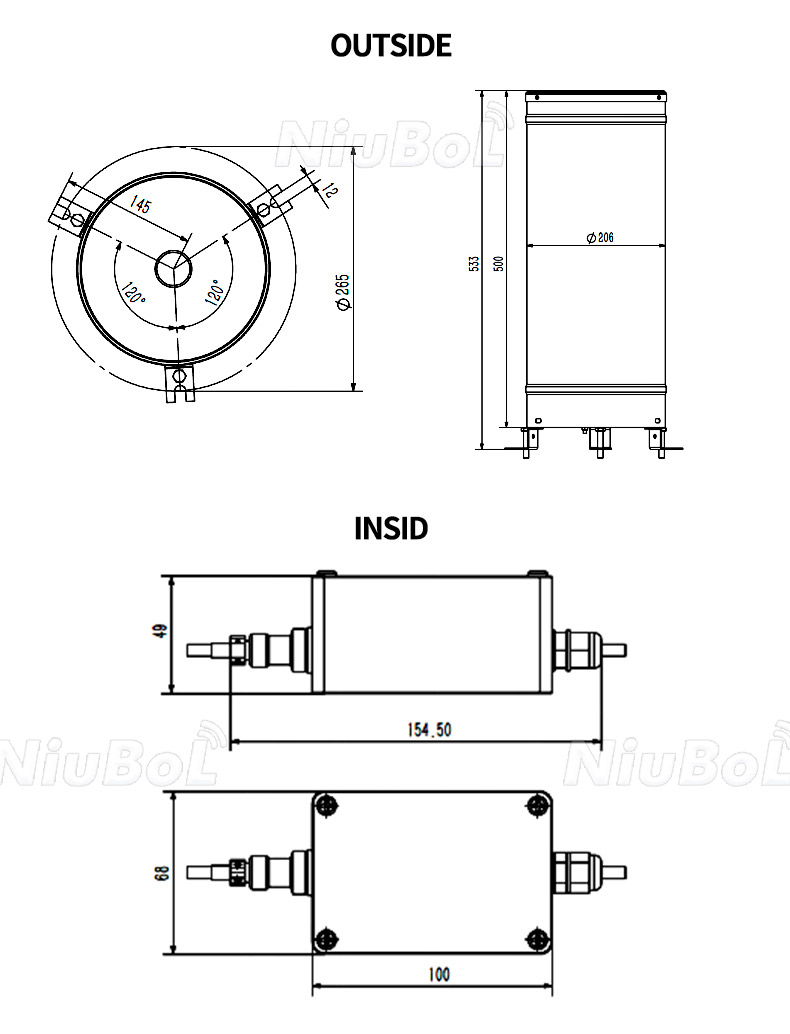
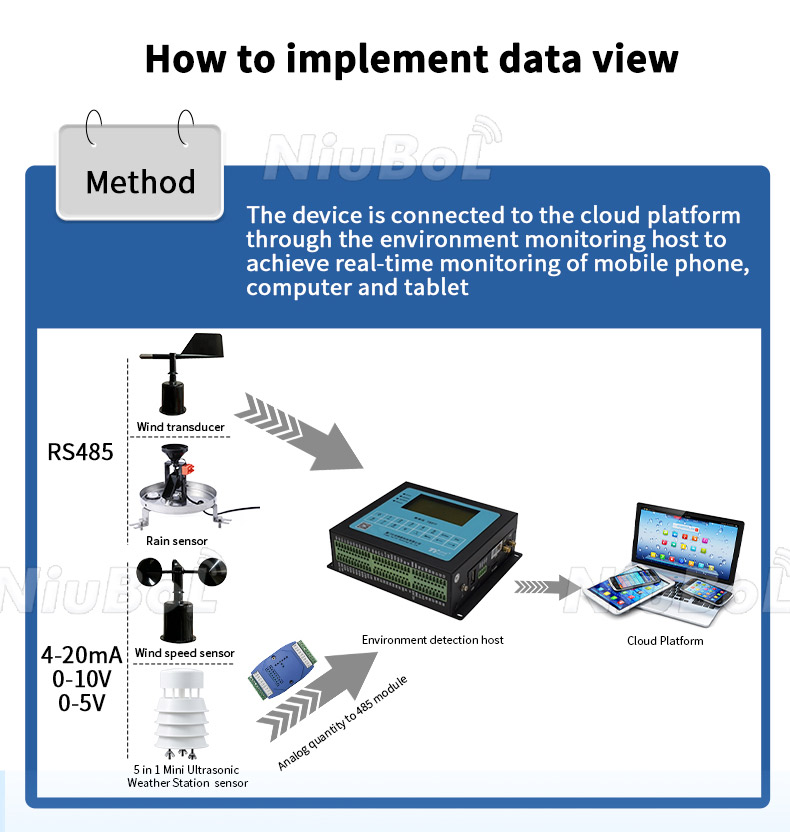
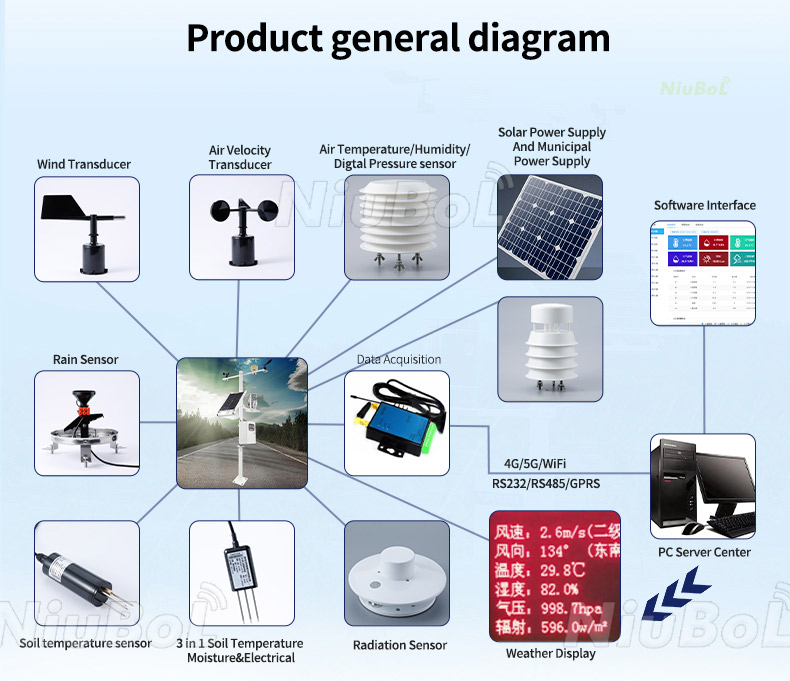
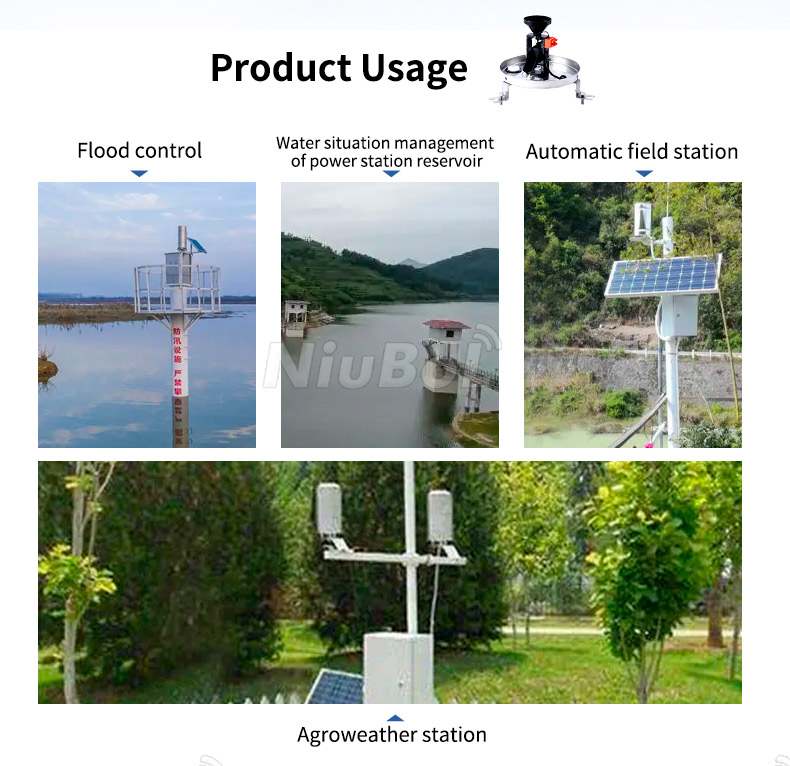
- Meteorological Monitoring: Rain gauges are one of the indispensable equipment in weather stations for collecting precipitation data, which is vital for weather forecasting and climate research.
- Agriculture: Farmers and agricultural scientists use rain gauge data to plan irrigation and crop management to optimise water use and improve crop yields.
- Hydrological studies: In hydrological studies of rivers, lakes and reservoirs, rain gauge data help researchers understand and predict floods, droughts and water allocation.
- Urban planning and management: The design and management of urban infrastructure such as drainage systems requires accurate precipitation data to prevent and respond to flooding events.
There are several factors to consider when choosing the right Rain Gauge:
1. Accuracy Requirements: Consider the data accuracy requirements for your project or study. Different types of rain gauges vary in accuracy.
2. Installation location: Consider the geographical and environmental conditions in which the rain gauge will be installed. Some rain gauges are designed with wind protection for use in windy areas.
3. Data logging and transmission: Modern rain gauges usually have automatic logging and remote data transmission capabilities. Choose whether you want these advanced features according to your needs.
4. Maintenance and durability: Consider the maintenance needs and durability of your rain gauge. Some rain gauges are designed to be easy to clean and maintain and are resistant to harsh weather conditions.
5. Budget: Prices for different types and features of rain gauges vary widely. Determine your budget range and based on that, look for the product that best meets your needs.
1.Identify Your Needs: Determine what type of rain gauge you need (standard, tipping bucket, weighing, etc.), including any specific features like data logging capabilities, wireless transmission, or compatibility with existing systems.
2.Research Suppliers: Use the internet to search for suppliers that specialize in meteorological instruments.Look for companies with a good reputation in the industry.Websites, forums, and professional networks can be good sources of information and recommendations.
3.Check Product Range: Look for suppliers that offer a wide range of products.A broader selection can provide more options to find a rain gauge that best suits your specific requirements.
4.Evaluate Quality and Certification: High-quality rain gauges will provide more accurate and reliable data.Check if the products meet international standards (e.g., World Meteorological Organization guidelines) and if they come with certifications or quality assurance.
5.Consider Technical Support and Warranty: Good customer service and technical support are essential, especially if you encounter issues with installation or operation.Check if the supplier offers a warranty and after-sales support.
6.Compare Prices: While price shouldn't be the sole deciding factor, it's important to compare prices from different suppliers to ensure you're getting good value for your investment.Consider the total cost of ownership, including maintenance and calibration expenses.
7.Read Reviews and Ask for References: Look for customer reviews and testimonials about the supplier and their products.If possible, ask the supplier for references from previous customers, especially those with similar needs to yours.
8.Inquire About Delivery and After-Sales Service: Understand the supplier's delivery timelines and whether they offer installation and training services.After-sales service is crucial for maintaining the equipment in good working condition.
In conclusion, choosing the right rain gauge requires a comprehensive consideration of your specific needs, budget, and the environmental conditions in which it will be installed and used. The right choice will not only provide accurate and reliable data, but also ensure the long-term stable operation of the equipment.
NBL-W-ARS-Tipping-bucket-rain-gauge-instruction-manual.pdf
Sensors & Weather Stations Catalog
Agriculture Sensors and Weather Stations Catalog-NiuBoL.pdf
Weather Stations Catalog-NiuBoL.pdf
Related recommendations
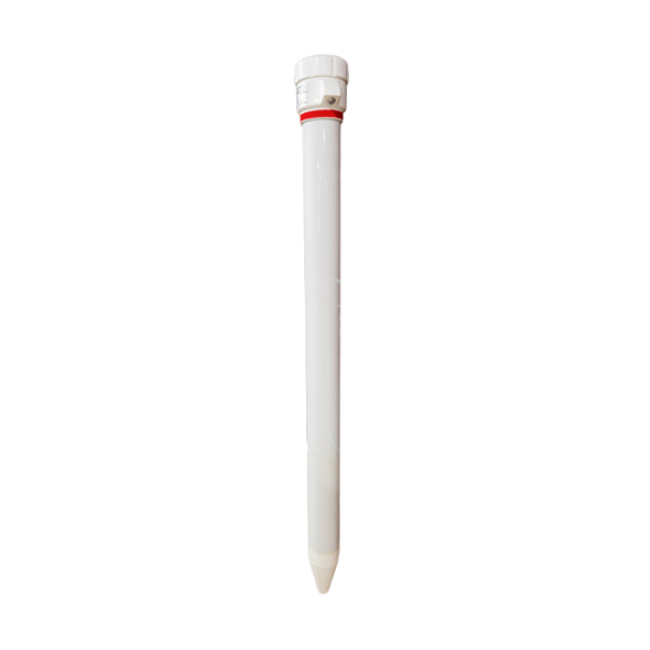 Multi-Depth Soil Sensor RS485
Multi-Depth Soil Sensor RS485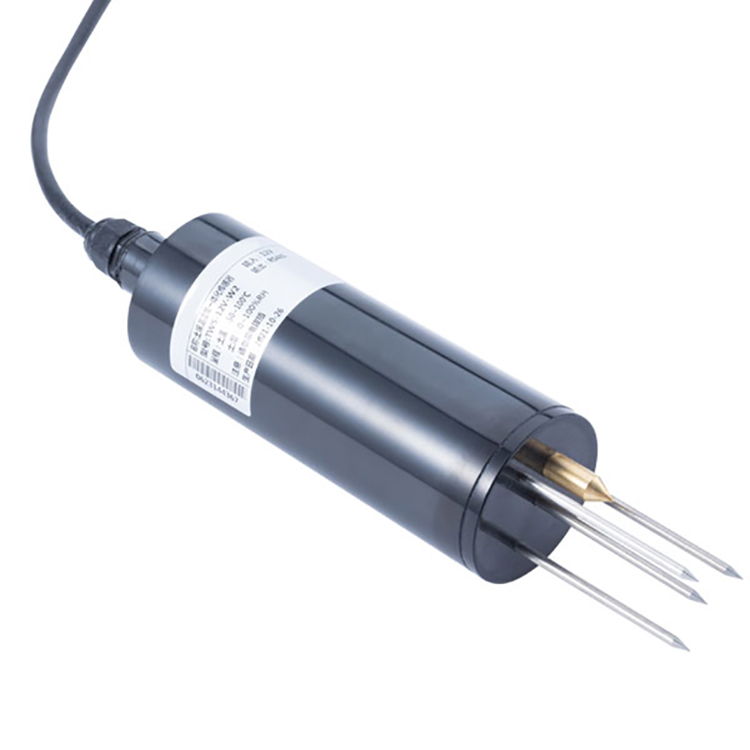 TDR Soil Moisture Sensor
TDR Soil Moisture Sensor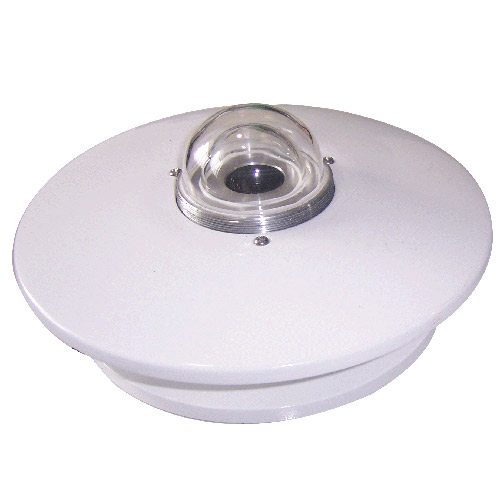 Pyranometer Solar Radiation Sensors
Pyranometer Solar Radiation Sensors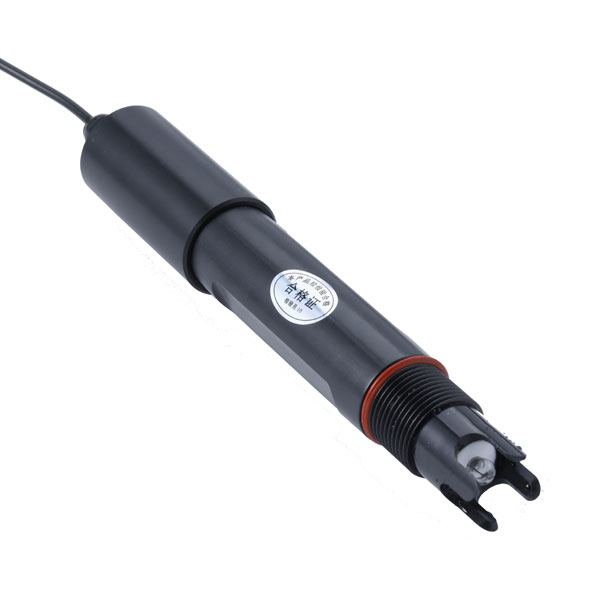 Soil ph sensor
Soil ph sensor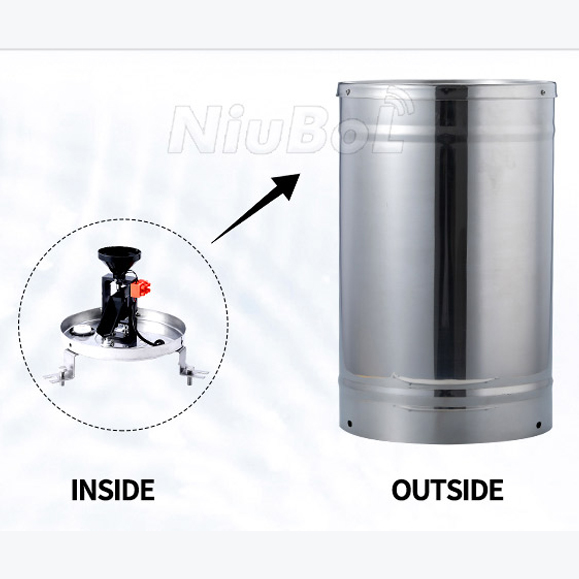 Tipping Bucket Rain Gauge
Tipping Bucket Rain Gauge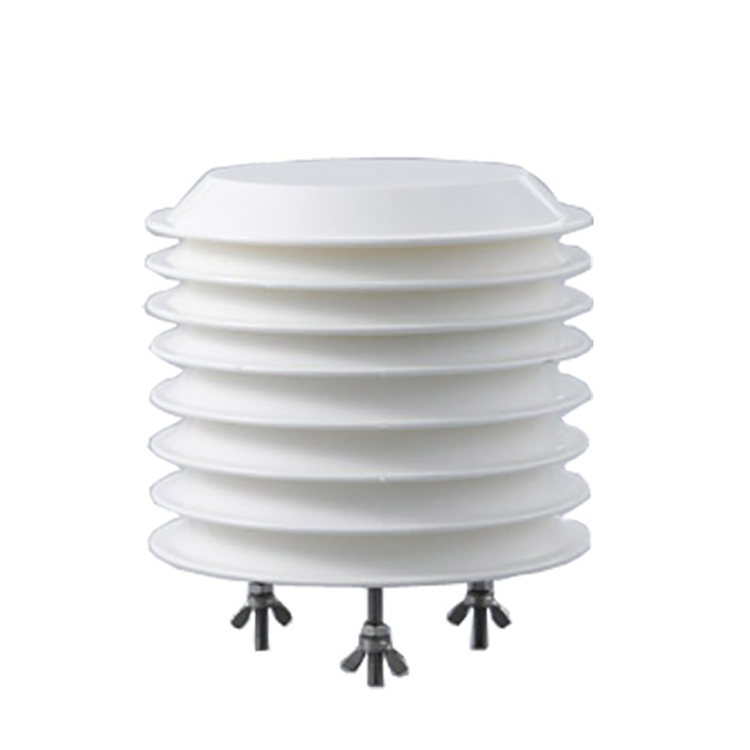 Air Temperature and Humidity Sensor
Air Temperature and Humidity Sensor
Screenshot, WhatsApp to identify the QR code
WhatsApp number:+8615367865107
(Click on WhatsApp to copy and add friends)
